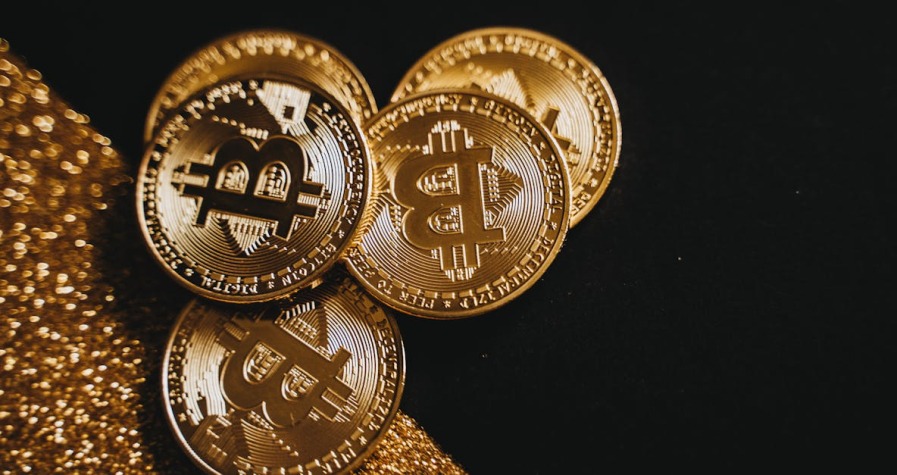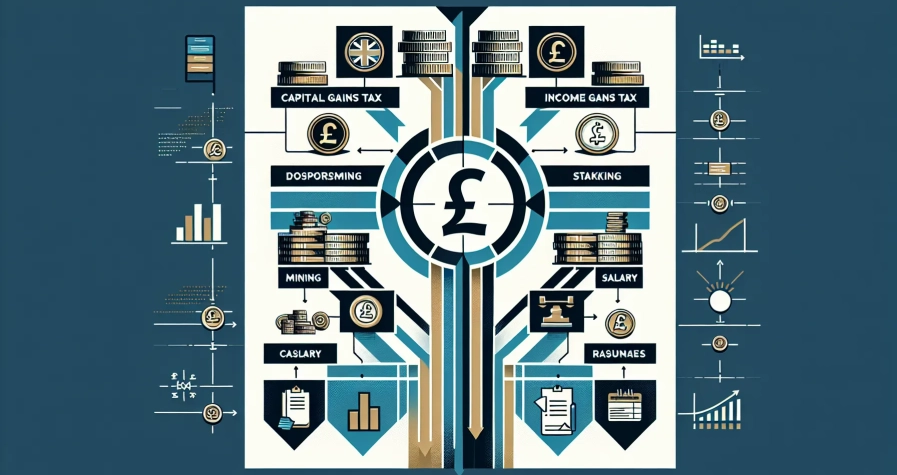You’ve probably heard the word “Bitcoin” countless times in news headlines or casual conversations, but you’re still not entirely sure what it actually means. Don’t worry – you’re not alone. Bitcoin might seem like complex tech jargon reserved for computer experts, but it’s actually much simpler than you’d think.
Bitcoin is essentially digital money that exists only online and operates without banks or governments controlling it. Think of it as electronic cash that you can send directly to anyone anywhere in the world, just like handing over physical coins – except it all happens through your computer or smartphone.
Whether you’re curious about investing, concerned about missing out, or simply want to understand what everyone’s talking about, this guide will break down Bitcoin in plain English. You’ll discover how it works, why people use it, and what makes it different from the pounds in your wallet.
What Is Bitcoin and How Does It Work?
Bitcoin operates as a decentralised digital currency that functions through a network of computers rather than traditional banking systems. You can transfer bitcoins directly between digital wallets without intermediaries controlling or monitoring your transactions.
Digital Currency Basics
Digital currencies exist only in electronic form and have no physical representation like coins or banknotes. Bitcoin represents the first successful cryptocurrency that solved the double-spending problem without requiring a central authority.
Key characteristics of Bitcoin include:
- Decentralisation: No single entity controls the Bitcoin network
- Limited supply: Only 21 million bitcoins can ever exist
- Divisibility: Each bitcoin divides into 100 million smaller units called satoshis
- Global accessibility: You can send bitcoins anywhere with internet access
Bitcoin transactions occur 24 hours daily across all time zones. Your Bitcoin wallet stores private keys that prove ownership of specific amounts rather than storing actual bitcoins. The network verifies every transaction through mathematical algorithms that ensure authenticity.
The Blockchain Technology Behind Bitcoin
Blockchain technology powers Bitcoin through a distributed ledger that records every transaction across thousands of computers worldwide. This public database updates continuously and maintains identical copies on each participating computer.
Each block contains:
| Component | Function |
|---|---|
| Transaction data | Records of bitcoin transfers |
| Timestamp | When transactions occurred |
| Hash | Unique digital fingerprint |
| Previous block hash | Links to the preceding block |
Miners validate new transactions by solving complex mathematical puzzles using specialised computer hardware. The first miner to solve each puzzle adds a new block to the blockchain and receives newly created bitcoins as reward.
This process creates an immutable chain where altering past transactions becomes computationally impossible. Each block connects cryptographically to previous blocks, forming an unbreakable sequence that extends back to Bitcoin’s creation in 2009.
The blockchain’s transparency allows anyone to view all transactions whilst maintaining user privacy through pseudonymous addresses. Your Bitcoin address appears as a string of letters and numbers rather than personal identifying information.
Why Was Bitcoin Created?
Bitcoin emerged in 2009 as a direct response to the 2008 global financial crisis, which exposed critical weaknesses in traditional banking systems. You can understand Bitcoin as a revolutionary solution designed to eliminate your dependence on centralised financial institutions.
The Problem with Traditional Money
Traditional currencies require your complete trust in banks and governments to maintain stability and process transactions accurately. You face significant risks when central authorities control your money, including potential system failures, inflation manipulation, and restricted access to your funds.
The 2008 financial crisis demonstrated how centralised systems create single points of failure that can collapse entire economies. You witnessed banks requiring taxpayer bailouts whilst ordinary people lost homes, savings, and jobs. Traditional money systems operate on trust rather than mathematical certainty, making them vulnerable to human error, corruption, and mismanagement.
Your transactions through conventional banking require multiple intermediaries, each adding fees and delays. Banks can freeze your accounts, block transfers, or impose restrictions without your consent. Governments can devalue your currency through excessive money printing, eroding your purchasing power over time.
Satoshi Nakamoto’s Vision
Satoshi Nakamoto designed Bitcoin as a peer-to-peer electronic cash system that removes intermediaries from financial transactions entirely. You gain complete control over your money through cryptographic proof rather than trust-based systems.
Nakamoto’s vision centres on a decentralised network where you can verify transactions independently through mathematical consensus. The blockchain technology ensures you can access a transparent, immutable ledger of all Bitcoin transactions without relying on any central authority.
Your Bitcoin transactions use private keys for digital signatures, proving ownership whilst maintaining pseudonymity. Mining participants validate your transactions by solving cryptographic puzzles, typically confirming transfers within 10-20 minutes across the global network.
This system empowers you to operate independently of traditional banking infrastructure, providing financial sovereignty that governments cannot easily control or manipulate. You can send Bitcoin anywhere globally without permission, intermediaries, or the risk of centralised system failures.
How to Get Bitcoin
You can acquire Bitcoin through several methods, with cryptocurrency exchanges being the most accessible option for beginners. Each method offers different advantages depending on your technical expertise and investment goals.
Buying Bitcoin on Exchanges
Cryptocurrency exchanges serve as online platforms where you can buy, sell, and trade Bitcoin using traditional currencies. Popular UK exchanges include eToro, Coinbase, Binance, Kraken, and CoinJar, each offering different features and fee structures.
Setting Up Your Exchange Account
Creating an account requires your email address and a secure password. You’ll complete identity verification (KYC) by submitting identification documents such as your passport or driver’s licence, plus proof of address to comply with UK regulations. This process typically takes 24-48 hours for approval.
Funding Your Account
Deposit GBP through bank transfers or debit cards once your account is verified. Credit card purchases aren’t supported on many exchanges due to regulatory concerns and chargeback risks. Bank transfers usually offer lower fees compared to card payments.
Making Your First Bitcoin Purchase
Navigate to the exchange’s trading interface and select Bitcoin from the available cryptocurrencies. Enter the amount you want to purchase in GBP or the fraction of Bitcoin you desire. Review the transaction fees before confirming your purchase, as these can vary significantly between exchanges.
Bitcoin Wallets and Storage
Bitcoin wallets are digital programmes or hardware devices that store your private keys—the cryptographic codes that prove ownership of your Bitcoin. Your private keys control access to your Bitcoin, making wallet security crucial for protecting your investment.
Hot Wallets vs Cold Wallets
Hot wallets connect to the internet, providing convenient access for frequent transactions but exposing your Bitcoin to potential online threats. Mobile apps, desktop software, and web-based wallets fall into this category.
Cold wallets operate offline, offering superior security by isolating your private keys from internet-based attacks. Hardware wallets like Ledger and Trezor represent the most secure storage option for long-term Bitcoin holdings.
Wallet Security Best Practices
Store your private keys and recovery phrases in secure, offline locations. Never share these details with anyone, as they provide complete access to your Bitcoin. Create multiple backup copies of your recovery phrase and store them in separate physical locations.
Mining Bitcoin (The Basics)
Bitcoin mining involves using specialised computers to solve complex mathematical puzzles that validate transactions and secure the blockchain network. Miners receive newly created Bitcoin as rewards for successfully adding blocks to the blockchain.
Mining Requirements and Challenges
Mining demands expensive ASIC (Application-Specific Integrated Circuit) hardware and consumes substantial electricity. Individual mining has become increasingly difficult due to network competition and rising computational requirements.
Mining Pool Participation
Most miners join mining pools where multiple participants combine their computational power to improve their chances of earning rewards. Pool members share the rewards proportionally based on their contributed computing power, providing more consistent returns than solo mining.
Mining represents a complex, resource-intensive method of acquiring Bitcoin that’s typically impractical for beginners compared to purchasing through exchanges.
Understanding Bitcoin Transactions
Bitcoin transactions represent the core mechanism for transferring digital currency between participants. When you send Bitcoin, you’re essentially creating a cryptographic record that proves ownership transfer from your address to another person’s address.
Every Bitcoin transaction contains three essential components: inputs (the source address holding the Bitcoin you’re sending), outputs (the recipient’s address), and the specific amount being transferred. You authorise this transfer by signing the transaction with your private key, which proves you own the Bitcoin and have permission to send it. Once signed, your transaction broadcasts to the entire Bitcoin network where thousands of nodes validate its authenticity.
How Bitcoin Transfers Work
Your signed transaction enters the mempool upon broadcast, a waiting area where unconfirmed transactions gather before inclusion in the blockchain. Miners collect these pending transactions and organise them into block templates, competing to solve complex cryptographic puzzles through computational work.
The first miner to solve the puzzle adds their block to the blockchain, confirming all transactions within that block. This newly created block then propagates across the network, prompting all nodes to update their blockchain copies with the latest confirmed transactions. Your transaction becomes part of Bitcoin’s permanent, immutable ledger through this process.
Transaction Fees and Confirmation Times
You pay transaction fees to incentivise miners to include your transaction in their blocks. During periods of high network traffic, miners prioritise transactions offering higher fees, resulting in faster confirmation times for those willing to pay premium rates. Conversely, transactions with lower fees may remain in the mempool longer, particularly during network congestion.
| Confirmation Metric | Typical Range | Notes |
|---|---|---|
| Initial confirmation time | 10-40 minutes | Varies with network traffic |
| Recommended confirmations | 3-6 blocks | For transaction finality |
| Total security wait time | 30-60 minutes | Complete transaction security |
Cryptocurrency exchanges and brokers often impose additional service fees beyond miner fees, calculating these as flat rates or percentage-based charges depending on your trading volume. These platform-specific fees vary significantly between providers and transaction types.
Bitcoin’s Value and Price Volatility
Bitcoin’s price movements often confuse newcomers due to their dramatic swings and unpredictable nature. Understanding these fluctuations helps you make informed decisions about Bitcoin investment and usage.
What Determines Bitcoin’s Price
Bitcoin’s value stems from fundamental economic principles of supply and demand, combined with unique digital asset characteristics. The cryptocurrency’s fixed maximum supply of 21 million coins creates inherent scarcity that influences pricing dynamics.
Supply-Side Factors:
- Capped Supply: Bitcoin’s 21 million coin limit means no additional bitcoins can ever exist beyond this threshold
- Mining Rewards: Approximately every four years, halving events reduce new bitcoin creation by 50%
- Current Circulation: Roughly 19.5 million bitcoins currently exist in circulation
Demand-Side Influences:
- Institutional Adoption: Large companies and investment funds purchasing bitcoin increase demand
- Economic Uncertainty: People often buy bitcoin during inflation concerns or currency instability
- Technological Developments: Improvements in bitcoin infrastructure and usability affect adoption rates
- Media Coverage: Positive news coverage typically drives increased public interest and purchases
Why Bitcoin Prices Fluctuate So Much
Bitcoin’s volatility exceeds traditional assets due to several interconnected factors that amplify price movements. These fluctuations create both opportunities and risks for bitcoin holders.
Market Sentiment Impact:
Positive news can trigger buying frenzies whilst negative events often cause panic selling. Bitcoin’s global 24/7 trading amplifies these sentiment-driven reactions compared to traditional stock markets with set trading hours.
Limited Market Maturity:
Bitcoin markets remain smaller than traditional financial markets, meaning relatively small trades can cause significant price changes. A single large purchase or sale by an institution can move prices by several percentage points.
Regulatory Uncertainty:
Government announcements about cryptocurrency regulations create immediate price reactions. Countries banning bitcoin trading cause sharp drops whilst regulatory approval drives price increases.
Technical Factors:
| Factor | Impact on Volatility |
|---|---|
| Network congestion | Higher transaction fees affect usability |
| Mining difficulty adjustments | Changes in mining rewards influence supply |
| Exchange security breaches | Damage confidence and trigger selling |
| Wallet technology improvements | Increase accessibility and adoption |
Recent Volatility Trends:
Bitcoin’s volatility has decreased significantly in 2023 and early 2024 despite prices exceeding $60,000. This reduction alongside rising market capitalisation indicates growing institutional adoption and market maturity through approved Bitcoin exchange-traded products.
On-Chain Behaviour Patterns:
Blockchain data reveals that miner selling patterns, institutional investment flows, and user engagement metrics directly influence price volatility. These network activities provide early signals for potential price movements during both bullish and bearish market phases.
Advantages and Disadvantages of Bitcoin
Bitcoin presents both significant opportunities and notable challenges that you must understand before making any decisions. Each benefit comes paired with corresponding risks that affect your potential experience with this digital currency.
Benefits of Using Bitcoin
Decentralisation eliminates central authority control over your financial transactions. You can send Bitcoin directly to anyone worldwide without banks or governments blocking, freezing, or monitoring your transfers.
Security features protect your digital assets through advanced cryptography. Your transactions remain pseudonymous, with your identity linked only to wallet addresses rather than personal information like traditional banking systems require.
Transaction costs stay significantly lower than conventional payment methods. You avoid intermediary fees from banks, credit card companies, and payment processors when sending Bitcoin internationally.
Supply limitation creates potential value preservation with only 21 million bitcoins programmed to exist. This deflationary characteristic differs from traditional currencies that governments can print indefinitely.
Global accessibility opens financial services to you regardless of your location or banking status. You can access Bitcoin 24/7 from anywhere with an internet connection, particularly valuable if you live in regions with unstable banking systems.
Self-custody grants complete control over your digital wealth. You hold your own private keys without depending on third parties to access or transfer your Bitcoin holdings.
International transfers happen quickly and cheaply without currency exchange complications. Your Bitcoin reaches recipients across borders faster than traditional wire transfers while maintaining lower costs.
Potential Risks and Drawbacks
Price volatility creates significant financial uncertainty that can affect your investment value dramatically. Bitcoin’s price fluctuates more than traditional assets, making daily payments impractical for many users.
Scalability limitations cause network congestion during peak usage periods. You may experience slower transaction confirmations and higher fees when many people use the network simultaneously.
Regulatory changes threaten accessibility and legality in various jurisdictions. Governments can impose restrictions, taxes, or complete bans that affect your ability to use or trade Bitcoin.
Environmental concerns arise from energy-intensive mining operations required to secure the network. The proof-of-work consensus mechanism consumes substantial electricity, raising ecological questions about Bitcoin’s sustainability.
Security vulnerabilities expose you to multiple threats including hacking, scams, and private key loss. Your Bitcoin becomes permanently inaccessible if you lose your private keys, with no recovery mechanism available.
Market manipulation affects price stability due to Bitcoin’s relatively small market capitalisation compared to traditional assets. Large holders can influence prices through significant buying or selling activities.
Technical complexity challenges newcomers who must understand wallets, private keys, and transaction processes. Mistakes in handling Bitcoin transactions can result in permanent fund loss without recourse options.
Common Bitcoin Myths Debunked
Bitcoin’s rapid growth has spawned numerous misconceptions that confuse newcomers and create unnecessary fear. Understanding the facts behind these myths helps you make informed decisions about Bitcoin investment and usage.
Bitcoin Functions as a Ponzi Scheme
Bitcoin operates as a decentralised network without a central controller profiting from participants. Unlike Ponzi schemes that require constant new investor inflows to pay existing investors, Bitcoin’s blockchain functions independently through mining rewards and transaction fees. No single entity controls Bitcoin’s supply or manipulates returns for personal gain.
Bitcoin Lacks Intrinsic Value
Bitcoin derives value from multiple sources including scarcity through its fixed supply of 21 million coins, decentralisation that removes single points of failure, cryptographic security protecting transactions, and growing global adoption. Similar to gold, Bitcoin’s value stems from trust and utility rather than cash flow generation. Major institutions like Tesla and MicroStrategy holding Bitcoin on their balance sheets demonstrates recognised value.
Illegal Activities Dominate Bitcoin Usage
Less than 0.24% of Bitcoin transactions linked to illicit activities in 2022, according to blockchain analytics firm Chainalysis. Traditional fiat currencies facilitate significantly more criminal transactions due to their anonymity and widespread acceptance. Bitcoin’s transparent blockchain actually makes tracking suspicious activity easier than cash transactions.
Volatility Prevents Store of Value Function
Bitcoin experiences price volatility due to its relatively young market and evolving regulatory landscape. However, institutional investors increasingly view Bitcoin as a digital store of value and inflation hedge because of its programmed scarcity. Historical data shows volatility decreasing as market capitalisation grows and mainstream adoption increases.
| Myth | Reality |
|---|---|
| Bitcoin is a Ponzi scheme | Decentralised network without central controller profiting from participants |
| Bitcoin has no intrinsic value | Value from scarcity, security, decentralisation, and global adoption |
| Only used for illegal activities | Less than 0.24% of transactions linked to illicit activities in 2022 |
| Too volatile for store of value | Institutional adoption growing despite volatility; reduces with market maturity |
Environmental Concerns Are Overblown
Bitcoin mining consumes energy but increasingly uses renewable sources. The Bitcoin Mining Council reports that 58.5% of global Bitcoin mining uses sustainable energy as of late 2023. Many mining operations locate near renewable energy sources like hydroelectric dams and solar farms, utilising otherwise wasted energy.
Understanding these realities helps you separate Bitcoin facts from fiction when considering your investment options. The cryptocurrency’s transparent nature actually provides more accountability than many traditional financial systems.
Is Bitcoin Right for You?
Bitcoin’s suitability depends on your financial goals, risk tolerance, and technical comfort level. You must evaluate both the compelling advantages and significant challenges before making investment decisions.
Key Benefits of Bitcoin
Decentralisation Protection: Bitcoin operates without central bank control, protecting you from government manipulation, censorship, and monetary policy changes that can devalue traditional currencies[5].
Scarcity Advantage: The fixed supply of 21 million coins creates digital scarcity that potentially increases value over time, offering you a hedge against inflation when fiat currencies lose purchasing power[2][5].
Global Financial Access: You can send Bitcoin internationally within minutes at lower costs than traditional wire transfers, eliminating intermediary fees and benefiting from 24/7 accessibility[5].
Growing Market Adoption: Increasing corporate acceptance and payment solutions like the Lightning Network improve Bitcoin’s practical usability for everyday transactions[2].
Major Risks to Consider
Price Volatility: Bitcoin experiences dramatic price swings that can result in substantial losses, making it unsuitable if you require stable value for short-term financial needs[5].
Scalability Limitations: Network congestion during high-traffic periods causes transaction delays and increased fees, potentially disrupting time-sensitive payments[5].
Regulatory Uncertainty: Legal frameworks vary globally and change frequently, creating risks that could impact Bitcoin’s accessibility and value in your jurisdiction[5].
Environmental Concerns: Mining operations consume significant electricity through proof-of-work consensus, raising sustainability questions about long-term energy usage[5].
Security Responsibility: You bear complete responsibility for protecting private keys, as losing them means permanent loss of funds with no recovery mechanism[5].
| Factor | Suitability Level | Key Consideration |
|---|---|---|
| Long-term investment | High | Benefits from scarcity and adoption growth |
| Daily transactions | Medium | Depends on network conditions and fees |
| Emergency fund | Low | Price volatility creates unpredictable value |
| International transfers | High | Faster and cheaper than traditional methods |
| Technical beginners | Medium | Requires learning curve for secure usage |
Bitcoin works best when you understand blockchain technology basics, can tolerate significant price fluctuations, and don’t need immediate access to invested funds. Consider starting with small amounts whilst you learn the technology and market dynamics before making larger commitments.
Conclusion
You’ve now explored Bitcoin from its fundamental concepts to practical considerations for potential investment. Understanding this revolutionary digital currency requires grasping both its transformative potential and inherent risks.
Remember that Bitcoin isn’t just another investment opportunity – it’s a paradigm shift towards financial sovereignty. Whether you decide to buy your first fraction of Bitcoin or simply stay informed about cryptocurrency developments you’re now equipped with essential knowledge.
Take time to absorb what you’ve learnt before making any financial decisions. Start small if you choose to invest and never risk more than you can afford to lose. Your Bitcoin journey begins with education and continues with careful practical experience.
The cryptocurrency landscape evolves rapidly so stay curious and keep learning. Your understanding of Bitcoin today positions you well for tomorrow’s digital economy.
Frequently Asked Questions
What is Bitcoin and how does it work?
Bitcoin is a decentralised digital currency that operates without banks or governments. It functions through a network of computers called blockchain, where transactions are recorded across thousands of machines. Users can send Bitcoin directly to anyone globally through digital wallets, similar to handing over electronic cash. The system uses cryptographic proof to verify transactions without requiring intermediaries.
How do I buy Bitcoin as a beginner?
The easiest way to buy Bitcoin is through cryptocurrency exchanges. Simply create an account, verify your identity, fund it with traditional money, and purchase Bitcoin. You’ll need a Bitcoin wallet to store your private keys securely. Start with small amounts whilst learning about the technology and market dynamics.
What makes Bitcoin valuable?
Bitcoin’s value stems from its limited supply of 21 million coins, decentralisation, security, and growing adoption. Market demand influences price through institutional investment, economic uncertainty, and global accessibility. Its scarcity and utility as a peer-to-peer payment system create value, similar to precious metals but in digital form.
Is Bitcoin safe and secure?
Bitcoin uses advanced cryptography and blockchain technology, making it highly secure. However, risks include price volatility, potential security vulnerabilities, and the responsibility of protecting your private keys. Cold wallets (offline storage) offer superior security compared to hot wallets (internet-connected). Never share your private keys with anyone.
Why is Bitcoin’s price so volatile?
Bitcoin’s price fluctuates due to limited market maturity, regulatory uncertainty, market sentiment, and supply-demand dynamics. Network congestion and mining difficulty adjustments also impact prices. However, volatility has decreased in recent years as institutional adoption grows and the market matures, indicating potential stabilisation over time.
Is Bitcoin legal and legitimate?
Yes, Bitcoin is legal in most countries and operates as a legitimate decentralised network. It’s not a Ponzi scheme, as there’s no central controller profiting from participants. Only a small fraction of Bitcoin transactions involve illegal activities. Many institutional investors and corporations now hold Bitcoin as a store of value.
What are the main risks of investing in Bitcoin?
Key risks include significant price volatility, regulatory changes, scalability limitations, environmental concerns, and technical complexity. You’re responsible for securing your private keys, and lost keys mean lost Bitcoin permanently. Market manipulation and the need for technical understanding also present challenges for newcomers to cryptocurrency.
How do Bitcoin transactions work?
Bitcoin transactions involve inputs, outputs, and amounts transferred between digital wallets. The sender authorises transfers using their private key, then broadcasts the transaction to the network. Miners validate transactions by solving cryptographic puzzles and add them to the blockchain. Confirmation typically takes 10-60 minutes depending on network traffic.









